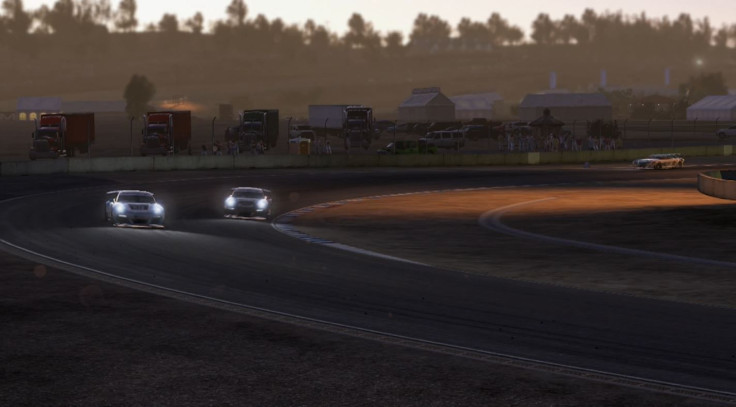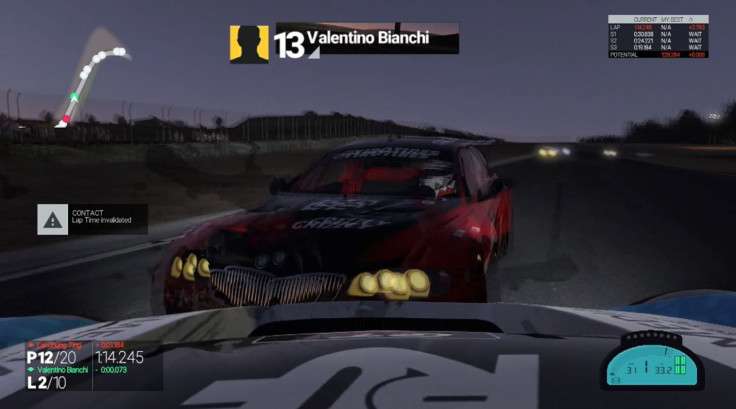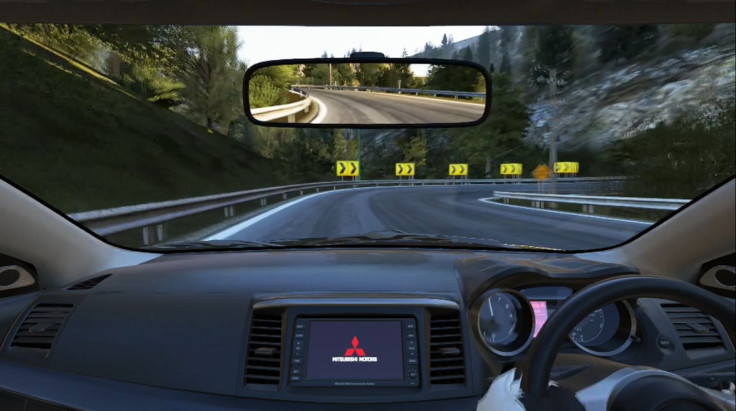Project CARS PS4 Review: Solid Racer Sim Was Worth The Wait

Project CARS has been hyped as the biggest simulation racer in years, positioned against genre titans Gran Turismo and Forza Motorsport, games that have ruled their respective consoles for over a decade. Multiple delays and issues pushed the game’s release back six months, but Project CARS has finally landed. It's available for Xbox One, Wii U, Windows PCs and the platform we used for this review -- Sony's PlayStation 4.
The premise: start a racing career in a number of “tiers,” ranked by the overall capabilities and difficulties the series’ rides pose. There are sets of goals and achievements (called “Accolades” here) for you to attain as you build skill and race in multiple series through virtual seasons. Theoretically, you could start from the bottom in tiny 125cc karts and slog your way through opponent after opponent and series after series to win a Formula Car championship, like Lewis Hamilton. Or you could just pick that tier from the get-go. Either way, you have access to all of the game’s cars outside of career mode from the beginning.
It’s an interesting formula; instead of forcing you to start small with slow cars and giving you money to buy faster stuff in time (Forza) or giving you license tests to pass to access quicker cars (Gran Turismo), Project CARS encourages you to play with whatever you like, without money or skill barriers.
The result is a solid entry in the sim racer ecosystem for consoles, especially in a year without a Forza or Gran Turismo entry. But I’m not sure it’s going to sway the sim racer devotees or keep the casual players coming back.

The Good
Project CARS is a beautiful game. There’s an incredible level of detail not only in the track surfaces, but also in the car models. Karts’ steering racks are visible and move with your inputs, gear levers move into their proper positions as you change gears, and interiors are remarkably true to their real-life counterparts.
Even more impressive however is the dynamic weather and lighting systems. The sun flare and bloom effects are simply stunning, even on console versions. Sure, you could turn these effects down or even off, but there’s so much charm in battling the sunset in your eyes as you try to remember your braking points for a corner...when you can only see the corner for a split second before you have to brake. Then there’s the way the weather can change over the course of a session: If a practice run starts in the morning sunny and perfect, the sun could give way to clouds in the afternoon for the first half of qualifying. Halfway through, some drizzle hits your windshield and two minutes later it’s a deluge. Luckily for you, you put down the fastest lap just before the heavens opened, so you can spend the rest of the session in the garage while your opponents struggle in vain to beat your time. It’s moments like this that Project CARS is at its best, immersing you in its world.

The weather isn’t the only immersion tool, either. The group responsible for the sound design really deserves recognition: They absolutely nailed most of the minute details that car geeks will notice instantly. I know what a Mitsubishi Evo X sounds like in FQ400 trim, and the in-game representation sounds like the real thing. The carbon ceramic brakes on the Porsche 911 GT3 car squeak and hiss just like the ones racing at Laguna Seca. It’s these details that will keep enthusiasts smiling, knowing the developers are car geeks just like us.
There’s a good selection of tracks to master, though some personal favorites didn’t make the cut (perhaps DLC will solve that). Some big names like Silverstone, Laguna Seca, Imola, and Nordschleife ensure that any motorsport fan will have a familiar track to start setting lap times on, though there are other big names included like Suzuka Circuit...that don’t have their official names, thanks to licensing troubles.
Add to that the deep level of car tuning and setup customization, and you’ve got a solid sim on your hands. But it’s not all good news.

The Bad
Project CARS is an unforgiving experience. The “tutorial” throws you into a high-powered LMP race car with no explanation of the controls or a guide for the track you’re on, which sets the tone for the overall experience. There’s no “rewind” feature; if you mess up, you’ll have to start the entire race again. That’s not inherently a bad thing for the experienced racers, but Project CARS doesn’t make any effort to teach players how to improve...or even learn the basics, if need be.
This could take place naturally in the game’s career mode, if you choose to start at the bottom. But there’s no rewards. Doing well in a series will net you a new contract or race invitation, but so what? You get no money or new cars, just another date on the calendar. There’s no sense of progression, or real incentive to keep you coming back aside from your own drive to improve your lap times.

Because heaven knows you can’t rely on the AI for competition. All of the computer drivers are essentially on a rail, and they don’t often deviate from their predetermined lines, even when you introduce your car into the mix. As you might imagine, this causes a few problems. The AI doesn’t respect the space you create, electing to ignore your presence at an apex and turn into you, or smack your rear bumper if they’re behind. They’re dim and impervious to any non-physical pressure you put on them; you could ride another car’s bumper for a whole lap and it’ll never show any signs of reaction. Unless you bump them out of the way.
They do deviate from their rituals occasionally, but it’s never in a good way; it’s usually because they’re flat-out cheating. For some reason, the AI cars get to ignore the game’s physics and track rules -- I got passed more than a few times by a driver cutting straight across the grass like Bowser with a Golden Mushroom in Mario Kart. That isn’t the only bug, though.
Constantly, I was penalized for going off the track...when I was clearly still on track. Cars sometimes stick to one another. There were crashes. These caused lots of swearing.

Conclusion
Project CARS is certainly an ambitious game, and I can respect a new player trying to shake things up. Ignoring the lack of structured progression, it’s a good simulator to lose yourself in, trying to shave tenths of seconds off lap times. It’s not perfect, but there’s a lot of content on the way. Just make sure to get a wheel and pedals to properly enjoy the experience.
Project CARS was released on May 12th, 2015 in North America. Bandai Namco provided a PS4 copy of the game for review.
© Copyright IBTimes 2024. All rights reserved.












